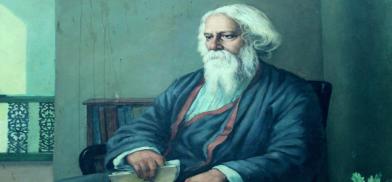The poet who never gave up: Is Tagore relevant today?
And yet, it is perhaps the reminder of these unfulfilled dreams, a never-ending quest, that is most relevant today, as we struggle through challenges that are at once global and personal, intricately and inextricably intertwined.

Like many of my generation and class who grew up in Kolkata in the 1960s, I took Rabindranath Tagore for granted. The volumes of his collected works, published to commemorate the Nobel Laureate's birth centenary in 1961, occupied pride of place in the central bookshelf in the drawing room. And a portrait of the standing poet found space on a wall. This was an age in which only pictures of the dead and deities received such veneration, before the self-indulgent visual explosion that we witness today.
Most of the volumes of the collected works remained untouched, seen rather than read. I discovered the enormous range several years later— essays, novels, poems, plays, short stories, and more. We were introduced to a handful of these through textbooks in school and college, almost inevitably not the best introduction, but some stories and poems gripped the imagination in spite of being compulsory readings.
Growing up as a young girl, the poignant story of the woman who had to die in order to prove that she was alive haunted me, while that of the wife who walked out of her secure and oppressive marital home, stepping into an unknown world which was left to the reader’s imagination, opened windows and doors which could never be firmly shut again.
While reading Tagore was sporadic, there was no escape from his songs—the Rabindrasangeet as we knew it. There were several instalments during the day— the ones I remember best were the songs at 7:40 am on All India Radio which we heard casually while getting ready for school. This was not careful, cultivated listening, simply a part of the habitus. What it provided, I realize with hindsight, is a feel for the range of songs, and the many ways in which they could be rendered to resonate with a motley audience, spanning three generations.
Over two thousand compositions
There were the seasonal songs, especially inaugurating spring and the rains, songs of love, prayer, patriotic songs, and others that blissfully defied classification (as indeed did many that were classified)— ranging from the profound to the profane. It was much later that I learned that there were over two thousand compositions, of which we were probably familiar with only a few hundred at best.
Having studied history, I am fascinated by questions of context. However, I am not a Tagore scholar, so my engagement with Rabindranath and Rabindrasangeet is that of a layperson. As a student of history, I am acutely aware that the world we inhabit today is vastly different from the late 19th and mid-20th century that was Tagore’s. I realize that the imagery in his songs can seem archaic. The spiritual songs, for instance, are replete with the image of the boatman, for whom one waits, hoping to be ferried across vast, often turbulent waters. Songs of prayer and love are redolent with the fragrance of flowers we may not have seen, far less smelt. Can we still savour the sweet pain of 'viraha', love in separation, in the same way? There is no single or easy answer. All I know is that we find a phrase, a melody, that comes back, often unsought, in answer to an unasked question, resonating with a barely articulated thought.
At another level, if we turn to his life, there is much that is thought-provoking, even troubling, providing us with the space to think through some of our existential dilemmas, and alerting us to the impossibility of quick, formulaic resolutions. As Nityapriya Ghosh reminds us in a biography that is self-consciously non-hagiographical (Rabindranath: A Pictorial Biography, New Delhi, Niyogi Books, 2011), Tagore was privileged, and yet had to resort to seemingly endless tours, performances and lectures in order to raise funds for his dream of building and sustaining Santiniketan, an institution that has had its own share of troubles, both past and present.
Vision of universal humanism
His personal life, too, was less than ideal, and certainly not smooth—punctuated with bereavements, misunderstandings and estrangements, even as there were friendships, affection, love, respect, and even adulation.
Tagore’s involvement with politics, too, was fraught with conflict. Often invoked as a symbolic figurehead for nationalist endeavours, he found himself advocating a vision of universal humanism that was by no means popular. His visits to fascist Italy, the Soviet Union, China, Japan and the USA were for him, as well as those around him, troubling to say the least. One is left with a sense of a lonely, uncertain quest.
And yet, it is perhaps the reminder of these unfulfilled dreams, a never-ending quest, that is most relevant today, as we struggle through challenges that are at once global and personal, intricately and inextricably intertwined. The poet who never gave up, who continued to share his thoughts till the very end thus remains a source of inspiration.
(The author taught history at Jawaharlal Nehru University, New Delhi. Views are personal. Some of her translations of Rabindrasangeet are available at https://www.youtube.com/@poushphagunerpala. Thinking with Tagore, a calendar for 2023 conceived and produced by Kumkum, Krishn, Smriti Vohra and S. Gunasekaran, can be accessed through this link 2023 - Thinking With Tagore - Calendar.pdf. She can be reached at kumkumr@yahoo.com)









Post a Comment